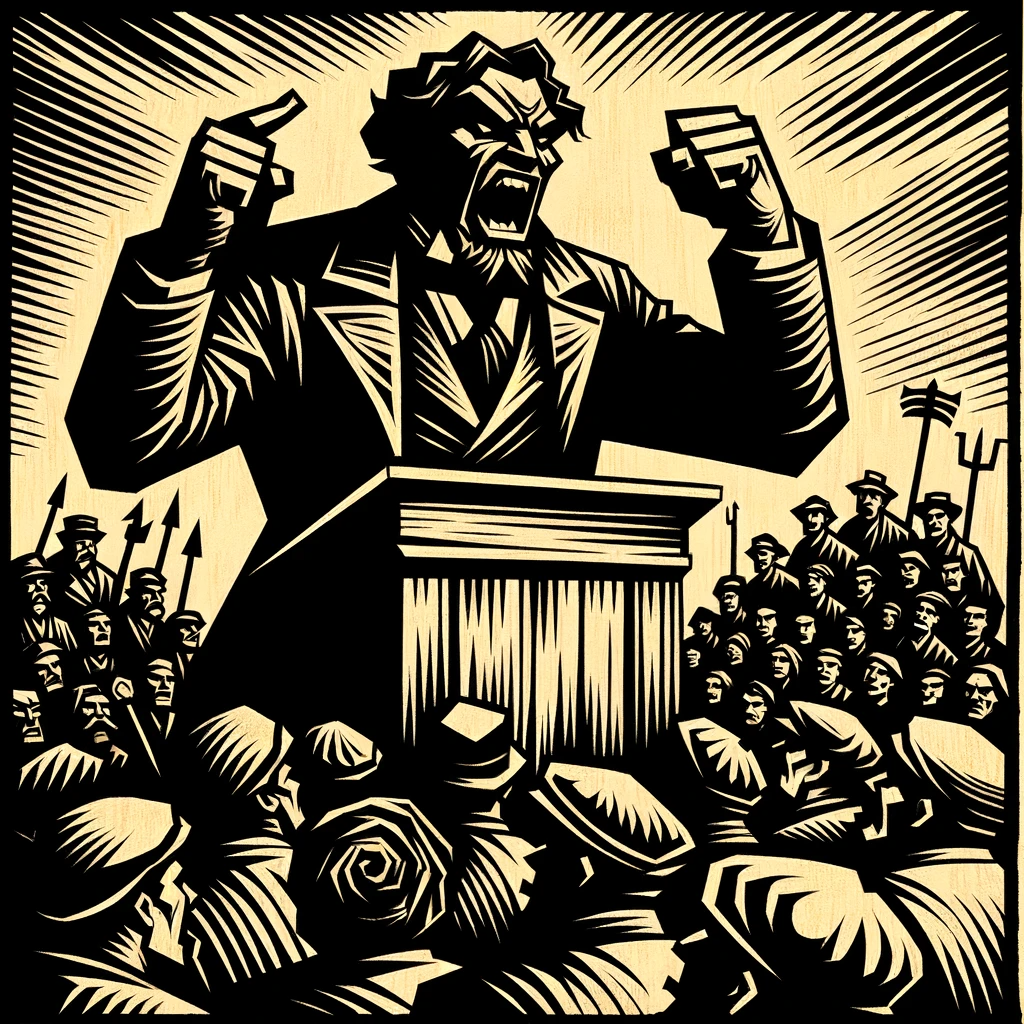Here’s the puzzle: Nearly every business leader I speak with agrees that storytelling is an essential skill. Many say it is the single most important skill for anyone running a company (or wanting to).
But there’s not a lot of agreement on what good storytelling actually is or what someone can do to get better at it.
This has been my obsession for the past few years: how to define effective business storytelling and how to train people to improve their storytelling ability.
I’m working on a more formal, bigger piece for the Harvard Business Review with some very smart thinkers. But I have learned enough that I wanted to share some of the key lessons we’ve learned.
1. Substance Over Style: Persuasion that Lasts
Picture a great storyteller. My guess is you are seeing some charismatic person, maybe up on a stage or cuddled up with a child, telling a dramatic tale. Their voice rises and falls with the narrative; sometimes, they embody the characters, seeming to disappear into the scene.
Forget all that.
Effective business storytelling is different from dramatic storytelling.
The primary goal of dramatic storytelling is to entertain.
The primary goal of business storytelling is lasting persuasion.
A leader telling a business story doesn’t just want to hold an audience for the duration of the story. The leader wants to reframe how the audience thinks about a problem, an opportunity, a business, or a career.
There is not necessarily a contradiction between persuasion and entertainment. These goals are not incompatible. They’re just different. It’s like food: healthy food can be delicious. Delicious food can be healthy. But if your primary goal is deliciousness, it’s easier to ignore health. If your primary goal is to entertain with a story, it’s easier to ignore some big, strategic goal.
This fact should be encouraging. There is a myth that storytelling is some inherent ability; a person either is a good storyteller or is not, and there’s not much they can do about it.
No. Effective persuasive business storytelling follows some clear guidelines that can be learned (quite easily) and can be practiced. I teach it all the time.

2. Story Is Simple
Effective storytelling—from an amazing pitch deck to a wonderful film or novel or that crazy story your friend told you last week—typically follows a clear, easy-to-learn structure.
It’s simple:
- Someone wants something.
- They try to get it and fail.
- They try a new way.
- They get that thing, or they don’t; but along the way, they learn a lesson.
You can plug any tale into this simple structure:
Luke Skywalker wants freewheeling adventure. He tries to get it. He succeeds. And he learns that adventure is not enough; one must stand up for one’s friends and principles.
The Hobbits want peace. They try to get it. They fail. But they learn that embracing danger and sacrifice is sometimes necessary.
This structure also works for business storytelling.
Your customers want to solve some problem. They are trying to do it with whatever tools they currently use. It’s not quite solving the problem, but you come along with a real solution. They learn that they were thinking of the problem in the wrong way.
Your investors want reliable returns. They are trying to get them by micromanaging you; forcing you to over-focus on short-term KPIs. You show them how your long-term vision will satisfy their needs more than short-termism. They realize they need to trust you more.
Think of the people you most want to persuade: your leadership team? Your investors? Your potential customers? High-value recruits?
Using this structure allows you to meet them where they are now and guide them, step by step, through the process of realizing the limitations of how they currently see the world and the advantages of embracing your vision.

3. In short, Story is Structure
By structure, I simply mean the order in which you tell (or write or show) the moments of a story.
If you talk to any professional storyteller — a screenwriter, novelist, magazine writer — they will probably tell you they spend more than three-quarters of the time building a solid structure, focusing on that crucial order in which information is laid out in a story.
Once you have a good structure, the other parts of writing —characters, scenes, data, graphic design — are far easier. It becomes obvious why this bit of information is crucial at this key moment.
If you are walking a prospect through a deck and their eyes glaze over when you come to a big spreadsheet of data, the first move should not be to ask a graphic designer to make the spreadsheet prettier or to dump in some clip art. Instead, you should look at what came before.
Did you set up a clear problem?
Did you nail why the current set of solutions isn’t really solving the problem?
Is it obvious why this data shows that your solution will solve the problem in a new way?
4. Storytelling Requires Emotional Engagement
I get nervous about using the E word, emotion, in a business context. Almost every time I work with a client company, there is someone — often the CFO — who more or less openly sneers at the idea that emotions have anything to do with business decision-making. What’s the ROI on a feeling?
The value of storytelling is not directly in the emotions a good story generates. The ROI is in the impact that enduring persuasion can have on most of the key aspects of a business.
If you get better at persuading people to embrace your vision and feel good about it, you will spend less on recruitment and attract better employees; you will get more investors at more favorable terms; you will get more customers, and they will be more likely to pay what you are worth. You will have more executive leadership team alignment and waste less time and resources on unproductive disagreements.
Our brains do not know the difference between emotions and data, feelings and facts. Our brains encode memories of facts and events with emotion. If you want to persuade people and to keep them persuaded for the long-term you need to attach your persuasion to an emotional impact.
5. Designing Emotional Change Is So Easy, It’s Scary
Storytelling is emotional manipulation. There: I said it.
Effective storytelling allows you to decide what emotions and thoughts you want another person to feel and think.
Picture a movie theater (remember those?) filled with people. Each person had a different sort of day. Some just fell in love, others just got dumped, some are feeling scared and others are just feeling pretty numb. But however they were feeling when they walked into the theater, they are suddenly all feeling the same feelings at the same second. They are scared at the big scary villain or they are furious that the hero keeps dating that awful person. They feel enormous relief at the end or a lingering sense of doom, whichever emotion the screenwriter and filmmakers designed.
You can do that, too. You can engineer feelings in your audience of investors, employees, recruits, customers, partners, etc.
That should — at least a little — feel scary. History is replete with villains who used the persuasive power of storytelling to do evil. We can all think of business leaders who told such amazing stories that they defrauded investors. Sometimes, people tell such compelling stories they convince themselves they’re true, even if they are little more than fantasies.

Great storytelling is neutral. It can be used for evil. But it can also be used for good. If you have a real solution to a real problem, but people aren’t getting that fact, you are doing them a disservice by not conveying the full emotional truth.
6. Start With The Pain. And Linger There.
An effective, persuasive story is not just about a fixed emotion. It requires a change in emotion. A story about someone who is happy, stays happy, and ends up happy is boring. So is a story about someone who is sad, stays sad, and ends up sad in the same exact way.
In its simplest form, a story is the process of moving the protagonist (and, therefore, the audience) from one emotion to another one. It is about change in emotional state.
Most business storytelling should end on a positive emotional state. The problem was solved. The company is successful (or will be soon).
That means that the best way to craft an effective business story is to start in the opposite emotion: pain, frustration, despair.
The deeper the pain is in the beginning, the greater the emotional release will be when the solution is provided.

A lot of business storytelling starts with the solution. Here is Product X; it has these awesome features! You should buy the product and get the features!!!
Or: you should work for us. We have these great benefits. And this ping pong table. And these stock options.
That’s fine sometimes. But that is just informing people about facts. It’s not shaping their emotional engagement.
Far more effective is to begin where the audience is right now, focusing on the pain they are feeling right now.
You wash your dishes in the dishwasher and your wine glasses have that ugly white stain. Then people come over and you feel really embarrassed. You have tried to wash the stain out by hand, it doesn’t work. Every time you have guests, instead of just being a great host, you are self conscious about your water stains. It makes you feel like a crappy host and an all-around failure. It sucks. Well,…
Or: you’ve been an engineer for several years. You have had a few moments where you worked on some interesting problems, but most of the time, you are working on a small part of a boring problem. You see bigger solutions, but you have no way to tell your bosses. You aren’t developing new skills because you are working on such a narrow set of problems. Your job is fine and it pays well, but you aren’t excited to go to work. You don’t see a path towards being the kind of creative engineer you had dreamed of being. Well, …
You almost don’t have to complete the story. Going deep into the specific pain that the audience is feeling, really lingering there, and allowing the misery to fester for a bit sets up the solution so beautifully that it almost writes itself.
7. Work with a Pro
You can learn storytelling. You can master it. It takes a bit of time, creativity, and practice.
Along the way, you have some important stories you need to tell. You have people you need to persuade.
You have investors who are not as trusting or confident in you as you wish they were.
You have a leadership team that doesn’t fully share the same vision or values and it’s distracting and damaging.
You have a need to hire some amazing talent and you’re not attracting the right folks or you might be attracting exactly the wrong people.
You have customers who knickel-and-dime you on price, not understanding the unique value you offer.
We can help.
We can work with you to both solve your short-term storytelling challengings and build a sustainable storytelling practice so you continually persuade the people who matter most.
It all starts with a free consultation. You’ll get a lot out of it, I promise!



